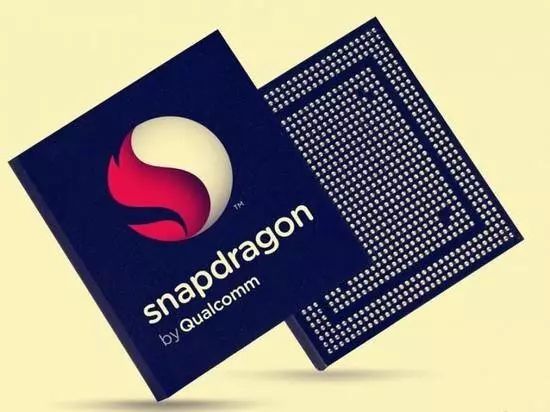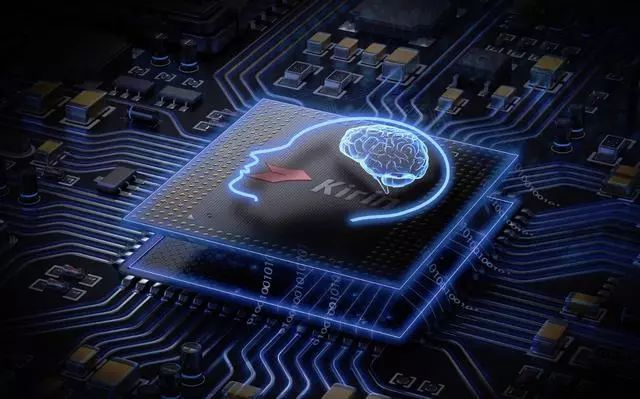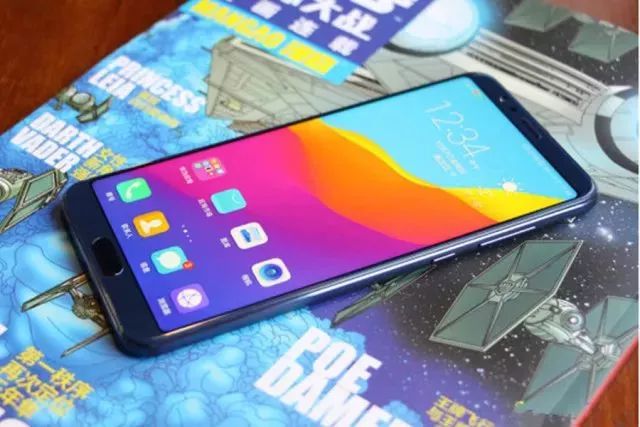In recent months, AI chips have become a hot topic in the smartphone industry. Major smartphone manufacturers have flocked to this trend, heralding the fate of AI chips. Industry insiders unanimously believe that AI chips will become a new focal point for many upstream manufacturers.
However, Qualcomm, as the traditional leader in mobile chips, has shown weakness in the face of this new trend. Not only has it arrived late, but its flagship chip, the Snapdragon 845, has come under criticism for lacking the crucial independent NPU unit.
Perhaps Qualcomm, which has long been mired in public opinion turmoil, is finally showing a downward trend in its most important chip product. I believe that missing the opportunity to layout the AI industry early and failing to keep up with the wave of AI chips will cause Qualcomm significant “chip pain”, and it may even miss a critical point and a new era in smartphone advancement.
Entering a New Era, Independent NPU Must Not Be Absent
Currently, the smartphone industry is facing multiple issues: growth has hit a ceiling and is trending downward, profit margins are razor-thin, and technological innovation is lagging, leading to insufficient motivation for consumers to upgrade… In such a chaotic situation, the smartphone industry must regroup and embark on a new journey to open a new era for its own evolution and transformation.
At present, for smartphone products to achieve qualitative breakthroughs and improvements, they cannot be confined to traditional product concepts but must be deeply empowered by cutting-edge technologies represented by AI. Moreover, they must align with the trends of the times. We are no longer in an era where high profits can be gained by saving on R&D resources and costs; instead, it is a new era guided by consumer needs and values.
Undoubtedly, Qualcomm has made significant contributions to the popularization and implementation of smartphones. Especially, the mid-range chip represented by the Qualcomm Snapdragon 625 has become an important driving force for the proliferation of budget smartphones. In other words, Qualcomm’s chips have met the previous demands for smartphone performance. However, this does not mean that Qualcomm can rest on its laurels and stop progressing.
As Qualcomm’s latest flagship chip, the Snapdragon 845’s lack of an independent NPU unit is puzzling to both the industry and consumers. After all, in an era where AI smartphones have become the trend, the NPU unit, designed specifically for AI computing, is actually indispensable. The absence of this unit in the Snapdragon 845 chip may be a decision based on monetary considerations.
For instance, after being heavily fined for monopolistic practices, Qualcomm aimed to save on R&D resources and costs from the ground up to earn more profits and stabilize its market value. Furthermore, adding an independent NPU unit would increase costs, which would then be reflected in the terminal chip, potentially leading to price hikes that partners would resist.

Recently, Lei Jun revealed on Weibo that the cost of the Snapdragon 845 chip, including a 17% import value-added tax, exceeds 500 yuan, which is more than three times that of the Snapdragon 660 chip. Such high costs make even major smartphone manufacturers like Xiaomi reconsider, let alone other manufacturers. Qualcomm has chosen to compromise with costs. This approach is clearly unlikely to succeed. For example, when the Xiaomi Mix 2S was launched, it emphasized that the camera hardware comes with AI capabilities to improve photography, yet it never mentioned the AI capabilities of the Snapdragon 845 chip, presumably knowing it would not hold up.
Three Essential Traits of a True AI Flagship Smartphone
A true AI flagship smartphone must meet multiple criteria. Those that do not meet these standards will not be recognized as true AI flagship smartphones. Currently, the industry recognizes that a true AI flagship smartphone must possess three essential traits: an independent AI processing unit, an AI operating system, and underlying open AI technology capabilities. These traits serve as the standards for consumers to distinguish true AI flagship smartphones.
Among them, the independent AI processing unit is a dedicated hardware unit added to traditional smartphone chip cores like CPU, GPU, ISP, and DSP, usually abbreviated as NPU. The significance of the independent AI processing unit lies in its ability to meet the massive demands for computing performance. However, some chip manufacturers confuse this concept; for instance, while the Snapdragon 845 chip does achieve edge AI, it can only allocate AI performance through NPE to schedule CPU, GPU, and DSP resources. However, since these chips are not specifically designed for AI computing, their efficiency is very low.
In comparison, Huawei’s Kirin 970 chip is the world’s first AI chip with an integrated independent neural network processing unit (NPU). The NPU adopts the HiAI mobile computing architecture, significantly outperforming general computing units like CPU, GPU, and DSP in AI performance, achieving about 50 times the energy efficiency and 25 times the performance advantage compared to the CPU.
The results are clear: the Kirin 970 chip can complete AI computing tasks faster and with less energy consumption. For example, the Honor V10, which uses the Kirin 970 chip, not only improves energy efficiency by 50% but also performs impressively in AI. Applications such as smart facial unlocking, AI voice assistants, game optimization, photography, AI translation, smart always-on display, and screen rotation provide a more user-friendly experience. Apple’s A11 chip also features a neural network engine designed specifically for running AI tasks.

Moreover, a true AI flagship smartphone must be equipped with a compatible AI operating system. If the previous iOS and Android systems mainly achieved rich functionalities through basic features combined with various apps, then the AI operating system acts like a “smart brain” added to these systems.
With the AI operating system, a cold smartphone is endowed with soul and life, capable of truly understanding user needs, anticipating and predicting user behavior, simplifying decision-making, and making smartphone usage genuinely intelligent. It is understood that the only system in the industry that can be called an AI operating system is Huawei’s EMUI 8.0. This system provides features like smart acceleration, smart services, and becoming smarter with use, making smartphones more vibrant.
Of course, a true AI flagship smartphone must also possess underlying open AI technology capabilities. It is important to note that a true AI flagship smartphone is not static; it needs to continuously develop and tap into its potential, connecting more resources as a platform, thus becoming an AI mobile computing platform. Essentially, it aims to connect more AI application developers, continually innovating the application experience of true AI flagship smartphones, bringing more intelligent user services. Huawei’s AI development platform HiKey 970 is known to be a very suitable platform for AI application development.

In summary, the decisive factors determining whether an AI smartphone is “true” lie in these three essential traits: independent AI processing unit, AI operating system, and underlying open AI technology capabilities. Currently, the Honor V10 already possesses these three traits. Looking at future trends, true AI flagship smartphones will increasingly emerge.
The True AI vs. Pseudo AI: The Dawn of a New Era
For the smartphone market to truly advance and achieve transformation, it must sift through the noise and allow true AI smartphones to dominate.
Taking the Honor V10, a true AI smartphone, as an example, its facial unlocking feature supports raising the phone to wake it, allowing users to unlock it simply by picking it up. In contrast, pseudo AI smartphones, even if equipped with similar features, still require processing through the CPU, resulting in slower unlocking speeds. Additionally, the Honor V10’s intelligent screen rotation feature allows the screen to follow the user’s gaze for automatic switching between portrait and landscape modes, keeping the screen parallel to the user’s sight, suitable for watching videos, browsing the web, and other scenarios. Pseudo AI smartphones cannot achieve this, being limited to mechanical portrait or landscape modes, resulting in a poor experience.
We can see that we have now entered a critical juncture of the showdown between true AI smartphones and pseudo AI smartphones. The outcome is undoubtedly clear, but it still needs to be resolved quickly. Once true AI smartphones deliver a heavy blow to pseudo AI smartphones, companies that have invested time, resources, and manpower into true AI smartphones will be able to quickly seize the market high ground. As leaders, these companies will guide the entire smartphone industry into a new era.

Qualcomm, which continues to focus on hardware performance while neglecting advancements in AI, may perform well for a short time, but it risks becoming disconnected from the entire era in the future, potentially leading to a series of negative consequences. For example, losing advantages over time may result in being abandoned by the market and consumers. Being overly focused on commercial interests not only loses its original intention but also stagnates its progress.
Currently, true AI smartphones are increasingly favored because they better address consumer pain points. Features like personalized characteristics allow true AI smartphones to better understand consumers’ usage habits; long-term use without lag ensures better continuity for smartphones. It is foreseeable that as the characteristics of true AI smartphones become well-known to consumers, they will quickly become mainstream and usher in a new era, benefiting us all.

| Baidu Smart | Alibaba | Tencent Holdings | Suning Cloud Business |
| Meituan Dianping | JD.com | NetEase Yanxuan | Gome E-commerce |
| Ant Financial | Jiufu Financial | Upward Financial | Jigsaw Puzzle |
| JD Finance | Mai Zi Jin Fu | Bitmain | Xunlei Finance |
| SAIC Roewe | Nissan | Midea Group | Skyworth Digital |
| Huawei Honor | Lenovo Holdings | Konka Electronics | Gionee Mobile |
| Alibaba Pictures | Inke Live | Yixia Miao Pai | Huajiao Live |
| Lancome Beauty | SF Express | Mobike | Guazi Maodou |
[Tech Talk] A signed self-media on Baijiahao and a gold medal self-media on Sohu Technology. It not only has the ability to create articles with over 100K+ views but is also one of the self-media with a cumulative reading volume exceeding 1 billion. Articles can be seen on top domestic columns such as Toutiao, Baijiahao, Sina, NetEase, Sohu, Tencent, Huxiu, TMT, Jiemian, Xueqiu, Hexun, etc. For business cooperation, please add WeChat: lilyliu1701; for content reprints, please add WeChat: liuyong-hexun.
